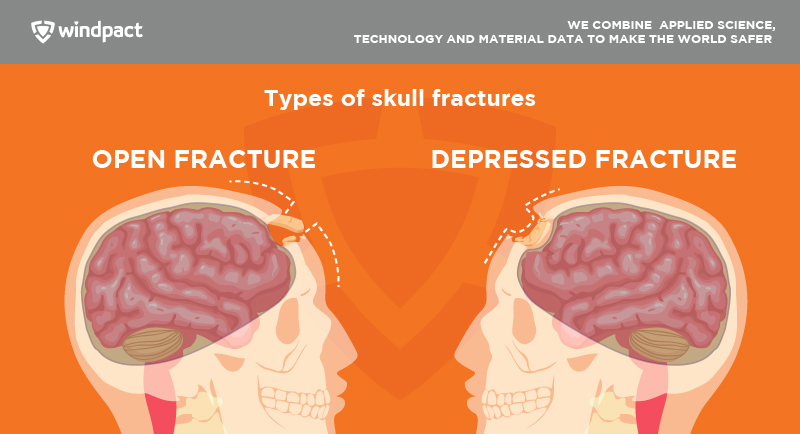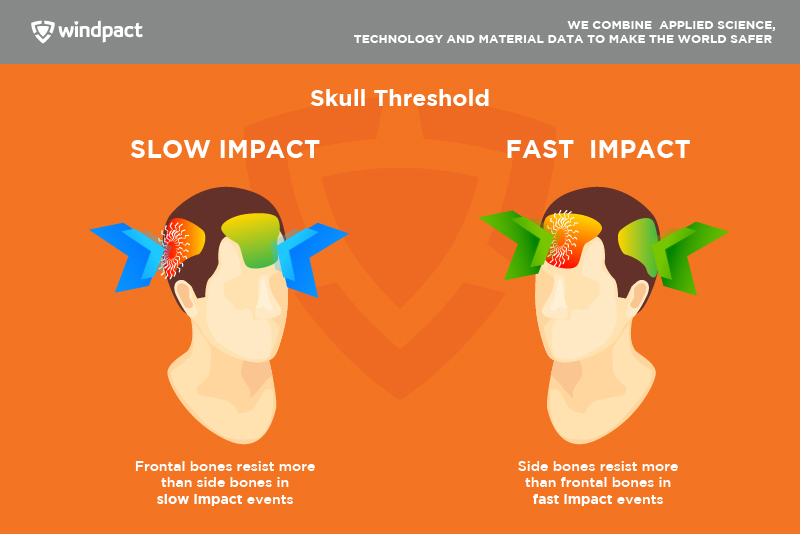Sensitivity Analysis of Skull Fractures in the Human Head
Unravelling the Mechanics That Cause Injury
Skull fractures fall under the category of traumatic brain injuries (TBIs), where brain damage occurs as a result; skull fracture is a unique route of injury leading to TBI, as while the presence of a fracture does not always lead to brain injury, the impacts that cause fractures oftentimes do.
No two impacts are equal, and the same can be said of skull fractures, which vary based on the locations of the impact, and the type of fracture, which is to say, whether the fracture was “open,” or, “depressed.” Open fractures penetrate the meninges of the brain, leading to greater risk for infection, while depressed fractures apply pressure to brain tissue.

It is helpful to think about skull fracture as having a “threshold,” or the minimum amount of force required to cause failure. When impact forces are severe enough — based on factors such as intensity and location, among others — this threshold is breached, and the skull is compromised.
Common causes of a skull fracture include:
- Falls
- Motor vehicle crashes
- Sporting impacts
- Explosions
With each impact, comes a host of issues with standardization; many different metrics measure concussion risk, skull fracture risk, and relative damage to the human head, but each comes with specific limitations. Oftentimes, these measures cannot account for each impact’s effect on the skull in every scenario.
That’s why researchers with Wright State University (WSU) processed different data sets from high-profile published experiments examining skull fractures. Using a reliable statistical package to normalize the data, researchers proposed a novel neural network model predicting the skull fracture threshold. Neural networks are simply intuitive models that take data, identify trends and patterns, and produce a prediction output based on the inputted data.
As the field looks more towards the predictive power of novel models, newer ways of approaching safety equipment design are becoming clear.
Skull injuries can happen even while wearing a helmet
No helmet can definitively prevent concussions and skull injuries, despite their use being associated with a significantly reduced risk of skull fractures occurring. When exceptionally strong forces are acting on the head, such as in the case of TBIs, the resulting stresses must be absorbed or redirected by the helmet; however, factors like location of the impact, individual thresholds of different parts of the skull, and the directionality of the colliding object influence how severe the injury may be.
Researchers acknowledge that noisy data sets often lack the skull fracture component, as acquiring human skulls for testing remains difficult, and translational studies from animals are not particularly powerful for establishing tangible recommendations for helmet manufacturers. To accomplish this, a more intuitive, predictive method is called for.
Thus, to truly understand how skull anatomy and force factor into impact risk, we need to break the skull up into geometric coordinates that better relate the effect of impact on skull fracture likelihood.
Thus, the process towards establishing fracture likelihood as a function of the impact’s location includes:
- Compiling and normalizing data derived from individual studies, often with very different experimental procedures.
- Establishing trends in the data that displayed force with respect to the impact’s classification as a frontal bone or temporoparietal (side) strike.
- Inputting the tolerance values that were derived from the trends in the data set, creating a neural network that artificially populated possible tolerance trends based on the patterns in the data.
Doing this accomplishes two main things: standardizing the data points and outcomes from the independent studies, while also producing an intuitive model that generates accurate predictions. This is how a neural network is implemented. This has the added benefit of elucidating more nuanced physical properties of the skull, namely how failure threshold varies at different parts.
Frontal bones in the skull can tolerate injury better than the side bones in human head modeling simulations
The team found that the side bones in the skull required less force of impact to break in comparison to the frontal bones; this correlates strongly to the known greater risk of concussion posed by impacts to the side of the head. On average, the frontal bones could resist up to 3 kN (kilonewtons) more force than the side bones; when the velocity of the simulated impactor was increased to its upper bound, interestingly, the frontal bones were more susceptible to breaking than the side. This implies that the side bones are generally more prone to breakage at low velocities, while the front ones are more at risk during high-velocity events.

These findings align with known risks of lateral impacts in automobile, sports, and blast impact events. Resulting coup and contrecoup injuries from side impacts may lead to deeper brain trauma than previously known.
While a neural network is, by design, limited to the patterns within its own data set, the sheer size of the data being looked at in combination with robust, clean iteration suggests greater applicability to broader issues with head protection. Namely, how injury risk increases depending on the velocity of the impactor, and its general point of contact.
Using predictive simulations to guide clinical and product recommendations is the newest frontier in applied engineering
Prediction and pattern completion are mainstays of neural networks, but these principles hold true in designing tangible solutions. Biomechanical engineering, as well as clinical research and medical sciences, rely on the predictive power of data and inputs to drive recommendations for design, care, and treatment, respectively.
Windpact applies these powerful predictive methods when running finite element analysis (FEA) to design better helmet configurations for mitigating impact. FEA methods allow designers to simulate helmet behavior under a wide array of testing scenarios before investing time, energy and money into creating a physical prototype. This is an invaluable use of FEA, as it is not constrained by its data set like a neural network is, demonstrating wider applicability in many distinct impact situations. Using this specific protocol helps answer many of the problems plaguing designers as more research is being conducted on brain injury risk factors; a dynamic system like the kind our FEA methods offer allows creators to tune their models to the latest standards.
The WSU team demonstrated the importance of geography when establishing brain injury risk, and this highlights a major issue in designing better helmets. A unit needs versatility, as impacts can come from any angle at remarkably different velocities. An optimized solution that can be placed anywhere in the helmet is exactly the kind of hardware Windpact is proud to propose as a reliable solution to this problem.
The Crash Cloud is the product of understanding how impact forces behave and help reduce stress away from the head, mitigating potential injuries. This kind of innovation not only improves energy modulation in helmets, but the Crash Cloud can also be placed anywhere in a design configuration, answering the WSU team’s problem of location and susceptibility of the side area of the skull. With software and hardware working in tandem as guidelines and research reveal more about head injury, Windpact is ready to drive solutions in automotive, military, and sports applications.
